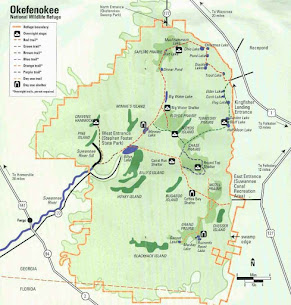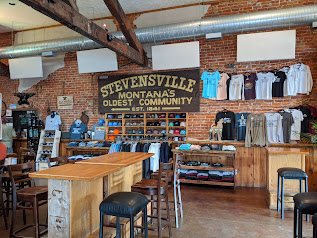Days are getting longer. The temps are heating up. The wildflowers are popping up. Weather-weary and pandemic-weary spring breakers are flocking to the beaches of Florida. The time is coming for us to think about heading north.
Friends had talked highly about Stephen C Foster State Park in southern Georgia which is located in the middle of the Okefenokee National Wildlife Refuge. They raved about the secluded area that was full of natural treasures. So we decided to head a little ways north to check out the Okefenokee swamp and hang out with the gators!
Does the name Stephen C Foster bring a catchy tune to mind???
🎶 Way down upon the Suwannee River 🎶
Stephan Foster's famous song ''Old Folks at Home'' contained that catchy line. And since the headwaters of the Suwannee River are located near the entrance of this park, it seemed appropriate that this Georgia state park is named after him.
The Okefenokee National Wildlife Refuge is a 438,000 acre shallow wetland that straddles the Florida/Georgia border and is the largest blackwater swamp in North America. The dark tea-color of the swamp is the result of large deposits of tannins in the water as it flows through peaty soil and decaying vegetation. This peat-filled wetland is home to many carnivorous plants, wading birds, and of course, the king of swamp-loving reptiles, the American alligator.
By the early 20th century, the Okefenokee area was almost completely destroyed by humans. The swamp was drained for farmland, and the ancient cypress forests were leveled by lumbering companies. Conservation efforts began in 1937 when the area became a National Wildlife refuge.
The area gained fame in the 1950s when the Okefenokee swamp became the setting of a popular syndicated cartoon strip, Pogo. Cartoonist Walt Kelly used humor and satire to address political as well as environmental issues. As proponents for protecting our environment, Pogo and his swamp friends sadly lamented that ... the Okefenokee swamp ''had met the enemy and he is us''.
We were happy to see that slowly, the area is starting to recover. During our three days in the park, we were able to hike through the long leaf pine forests,
... follow the boardwalk through the wetland swamp,
and canoe past the Spanish moss-laden cypress trees whose beauty is reflected back in the black water.
We were also able to admire the ''star'' of this park ... the American Alligator. Twelve thousand gators of various sizes call this refuge ''home''.
... to the grand-daddies happily digesting their recent meal on a sunny log,
... there were many opportunities to capture the fearsome beauty of these swamp creatures. My new camera helped me zoom in on the gators as they waded through the murky waters or just basked in the sun.
Since most of the area is covered with water or mud, the best way to see the refuge is, of course, by boat. We rented a canoe our first day, but soon realized that if we wanted to get into the ''heart'' of the refuge, we would need something with more power than the paddler that Doug was stuck with!
The following afternoon we rented a jon boat and were able navigate deeper into the refuge where the waterways narrowed and the gator sightings increased. Doug expertly maneuvered around cypress trees and floating gator obstacles.
For those more adventurous then us, it is possible to plan a multiple-day canoe trip deep into the refuge and camp overnight on one of several wooden camping platforms. Hanging out with gators and swarms of mosquitoes at night?? We will leave that adventure for someone braver (or crazier) than us.




































































